Recombinant Human CD274 protein(Met1-Thr239), His-tagged
| Cat.No. : | CD274-592H |
| Product Overview : | Recombinant Human B7-H1 (NP_054862.1)(Met 1-Thr 239) was expressed in HEK293 with a C-terminal polyhistidine tag. |
| Availability | April 02, 2025 |
| Unit | |
| Price | |
| Qty |
- Specification
- Gene Information
- Related Products
- Case Study
- Application
- Download
| Species : | Human |
| Source : | HEK293 |
| Tag : | His |
| Protein Length : | 1-239 a.a. |
| Form : | Lyophilized from sterile PBS, pH 7.4. Normally 5 % - 8 % trehalose, mannitol and 0.01% Tween80 are added as protectants before lyophilization. |
| Bio-activity : | 1. Measured by its binding ability in a functional ELISA. Immobilized human B7-H1 at 20 μg/ml (100 μl/well) can bind human PD1 with a linear range of 0.032-0.8 μg/ml. 2. Using the Octet RED System, the affinity constant (Kd) of PD-1 Protein, Human, Recombinant (Fc Tag) bound PD-L1 Protein, Human, Recombinant (His Tag) was 19.2nM. |
| Molecular Mass : | The recombinant mature human B7-H1 comprises 232 amino acids and predicts a molecular mass of 26.8 kDa. As a result of glycosylation, the human B7-H1 migrates as an approximately 35-38 kDa protein in SDS-PAGE under reducing conditions. |
| Endotoxin : | < 1.0 EU per μg of the protein as determined by the LAL method |
| Purity : | > 95 % as determined by SDS-PAGE |
| Storage : | Samples are stable for up to twelve months from date of receipt at -20°C to -80°C. Store it under sterile conditions at -20°C to -80°C. It is recommended that the protein be aliquoted for optimal storage. Avoid repeated freeze-thaw cycles. |
| Reconstitution : | It is recommended that sterile water be added to the vial to prepare a stock solution of 0.2 ug/ul. Centrifuge the vial at 4°C before opening to recover the entire contents. |
| Gene Name | CD274 CD274 molecule [ Homo sapiens ] |
| Official Symbol | CD274 |
| Synonyms | CD274; CD274 molecule; CD274 antigen , PDCD1LG1, programmed cell death 1 ligand 1; programmed cell death 1 ligand 1; B7 homolog 1; B7 H; B7 H1; B7H1; PD L1; PDL1; CD274 antigen; PDCD1 ligand 1; programmed death ligand 1; B7-H; PD-L1; PDCD1L1; PDCD1LG1; MGC142294; MGC142296; |
| Gene ID | 29126 |
| mRNA Refseq | NM_014143 |
| Protein Refseq | NP_054862 |
| MIM | 605402 |
| UniProt ID | Q9NZQ7 |
| ◆ Recombinant Proteins | ||
| CD274-593H | Recombinant Human CD274 Protein | +Inquiry |
| CD274-189MAF555 | Active Recombinant Mouse Interleukin CD274 Protein, MIgG2a mFc-tagged Protein, mutant, Alexa Fluor 555 conjugated | +Inquiry |
| CD274-189MP | Recombinant Mouse CD274 protein, mutant MIgG2a Fc-tagged, R-PE labeled | +Inquiry |
| Cd274-2275MF | Recombinant Mouse Cd274 Protein, His-tagged, FITC conjugated | +Inquiry |
| CD274-592HAF647 | Recombinant Human CD274 Protein, His-tagged, Alexa Fluor 647 conjugated | +Inquiry |
| ◆ Cell & Tissue Lysates | ||
| CD274-002RCL | Recombinant Rat CD274 cell lysate | +Inquiry |
| CD274-2735HCL | Recombinant Human CD274 cell lysate | +Inquiry |
| CD274-2642MCL | Recombinant Mouse CD274 cell lysate | +Inquiry |
| CD274-914CCL | Recombinant Cynomolgus CD274 cell lysate | +Inquiry |
Case 1: Li H, et al. J Transl Med. 2024
In gastric cancer, myeloid-derived suppressor cells (MDSCs) significantly assist tumors in dodging the immune system. A study involving 90 patients found that those with higher levels of exosomal PD-L1 had worse survival rates, as these levels boost the number of MDSCs. This increase happens because exosomal PD-L1 activates the IL-6/STAT3 pathway, leading to more MDSC proliferation. Tests confirmed that these exosomes support tumor growth and immune evasion by boosting MDSCs.
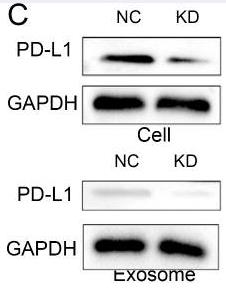
Fig1. Western blotting analysis of the PD-L1 content in GC cells and exosome from the culture supernatant of GC cells.
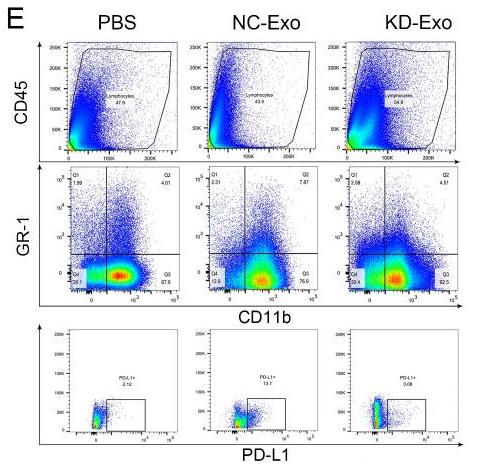
Fig2. Percentages of MDSCs (CD45 + CD11b + Gr1+) and PD-L1 + MDSCs in tumors determined via flow cytometry.
Case 2: Agborbesong E, et al. Cells. 2024
The primary cilium, a sensory structure on most cells, is linked to diseases if defective. While related to immune synapses, the role of immune components in cilia formation isn't well-known. This study reveals that PD-L1, a protein usually involved in immune function, also affects ciliogenesis. It's present in crucial cell areas and, when depleted, enhances cilia growth and the presence of essential cilia proteins. PD-L1 interacts with proteins like BBS5 and PC-2, playing a role in sensory signaling.
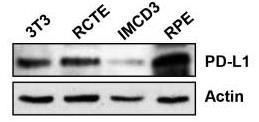
Fig1. Western blot analysis indicating the differential expression of PD-L1 in fibroblast and epithelial cells.
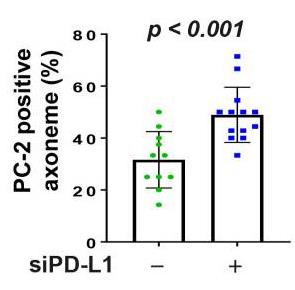
Fig2. Quantitative data of PC-2-positive cilia in PD-L1 siRNA knockdown NIH3T3 cells compared to control siRNA cells.
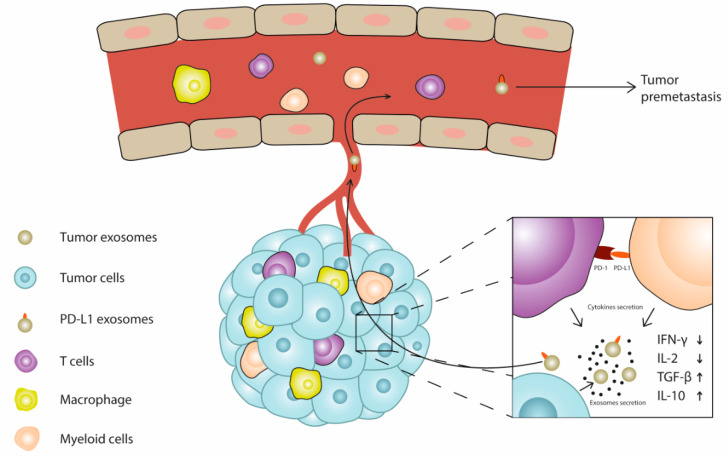
Fig1. Schematic diagram of the effect of exosomal PD-L1 on tumor microenvironment. (Lingxiao Ye, 2021)
Not For Human Consumption!
Inquiry
- Reviews
- Q&As
Ask a Question for All CD274 Products
Required fields are marked with *
My Review for All CD274 Products
Required fields are marked with *
Inquiry Basket


